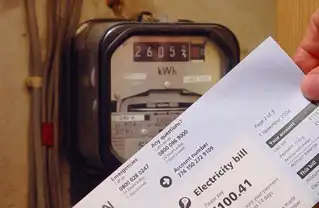“Re-Greening” the White House
By Associated Press
Substation Relay Protection Training
Our customized live online or in‑person group training can be delivered to your staff at your location.

- Live Online
- 12 hours Instructor-led
- Group Training Available
No. 1: It's already been done.
No. 2: It needs to be done again.
It was Earth Day 1993 when President Bill Clinton launched his ambitious "greening the White House" project. That effort saved more than $1.4 million in its first six years, largely from improvements in lighting, heating, air conditioning, insulation, water sprinklers and other measures.
During George W. Bush's two terms, workers installed three solar systems, including a thermal setup on the pool cabana that heats water for the pool and showers, and photovoltaic panels atop a maintenance shed that supplement the mansion's electrical supply. Bush also made a big push to recycle office paper, although the overall go-green effort lost momentum during his tenure, according to many outside observers.
Obama promised before he took office that he wanted to sit down with White House staff to evaluate what can be done to conserve energy in a 132-room behemoth of a mansion/office that leaves an EEE-sized carbon footprint.
"Part of what I want to do is to show the American people that it's not that hard," Obama said in a television interview during the transition. He said he's one of those people who tiptoes around and turns off lights at night. "I'm not going to be obsessive about it. But I do that in my current house. So there's no reason why I wouldn't do it in my next one."
The family already is taking action to set an eco-example for the nation. First lady Michelle Obama recently broke ground for an organic herb and vegetable garden on the South Lawn. The Obamas have installed an environmentally friendly wooden swing set for their children on the White House grounds. Cushioning underfoot is made from recycled rubber tires.
Obama isn't ready to give details of his broader go-green plans for the White House, but administration officials report that small steps are under way: The housekeeping staff is making the switch to greener cleaning supplies, and complex managers have asked engineers and groundskeepers to use greener products whenever possible. Efforts are afoot to improve and promote recycling.
As for what more can be done, outside experts on green buildings report that the administration is seeking out information about what's feasible. Given the priority Obama placed on renewable energy in his economic stimulus package and budget, environmentalists are chattering about what further steps he will take at the White House.
"They're very focused on leading by example," said Rick Fedrizzi, chief executive of the nonprofit U.S. Green Building Council, which has offered advice to the White House. "It's great to see that they're focused on solid solutions and not just throwing sound bites over the fence every day."
Sometimes, good intentions have gotten ahead of the technology in eco-efforts at the White House.
In the late 1970s, President Jimmy Carter installed a $30,000 solar water-heating system designed to save $1,000 a year in heating costs. It didn't really work.
"Talk to anyone who worked in the West Wing then, and they would say they washed their hands with cool water," said former chief usher Gary Walters, who spent 37 years at the White House before retiring two years ago.
Those who've been involved in past efforts to make the White House more eco-friendly say that for all that's already been done, there is plenty left to do, given how quickly technology changes.
"It's definitely time to revisit it," said Bill Browning, who helped launch the Clinton-era greening effort in 1993. "The green building movement has evolved quite a bit since then."
Browning, founder of the Terrapin Bright Green consulting firm, said the staff members who manage the White House and its grounds — employees who carry over from one administration to the next — have been "the real champions of greening the White House. They made it their project during the Clinton years and kept it going during the last administration."
For all the enthusiasm about going green, though, there are practical limits. Last year House Speaker Nancy Pelosi, D-Calif., announced a "Green the Capitol" program to zero out the Capitol's carbon impact by December 2008. But now, the House quietly shelved the project because it couldn't guarantee that Capitol operations were carbon neutral even after purchasing "offsets" that finance projects to reduce greenhouse gases.
The White House historically has been a showcase for technological advances. In the 1880s, it was one of the first houses in the nation to have running water. In the early 1900s, it got an early air conditioning system (that ultimately didn't work).
Walters said both the Clintons and George and Laura Bush were surprised by what already had been done to conserve energy when they moved into the White House.
"We tried to do more than the average bear," he said, adding that the first lady's garden grew herbs during both administrations, and that limited container gardening was done on the mansion's roof to supply the White House with tomatoes, peppers and other vegetables.
Architect Jean Carroon, an expert on green strategies for historic buildings, said the White House isn't the "energy hog" that people might think. Older buildings often have thick masonry walls that provide good insulation and big windows that let in lots of daylight, she said.
Carroon said it's important for the White House to demonstrate simple conservation steps that all families can take.
"It isn't about the flashy stuff," she said. "It's about being smart and making it happen.... The message to most citizens should be: You don't have to be in the White House to implement amazing energy savings."
Steve Strong, whose Solar Design Associates designed and installed the solar systems during the second Bush administration, said he'd love to see the Obamas kick the effort up a notch by installing a solar array on the South Lawn.
"That would be a compelling national and international symbol," he said.











